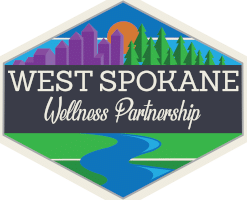Marijuana

Photo by NIDA
Common Names: 420, Blunt, Bud, Ganja, Grass, Green, Herb, Joint, Pot, Reefer, Sinsemilla, Skunk, Weed
What is marijuana?
Marijuana is the dried leaves and flowers of the Cannabis sativa or Cannabis indica plant. Stronger forms of the drug include high potency strains – known as sinsemilla (sin-seh-me-yah), hashish (hash for short), and extracts including hash oil, shatter, wax, and budder.
Of the more than 500 chemicals in marijuana, delta-9-tetrahydrocannabinol, known as THC, is responsible for many of the drug’s psychotropic (mind-altering) effects. It’s this chemical that distorts how the mind perceives the world. In other words, it’s what makes a person high.
Strength and Potency
The amount of THC in marijuana has increased over the past few decades. In the early 1990s, the average THC content in marijuana was less than 4 percent. It is now about 15 percent and much higher in some products such as oils and other extracts (see below). Scientists do not yet know what this increase in potency means for a person’s health. Some people adjust how they consume marijuana (by smoking or eating less) to compensate for the greater potency. There have been reports of people seeking help in emergency rooms with symptoms, including nervousness, shaking and psychosis (having false thoughts or seeing or hearing things that aren’t there), after consuming high concentrations of THC.
West Spokane Wellness Partnership provides marijuana education to schools, parents/caregivers, school staff, and community on an ongoing basis. See our events page to learn more!
Learn more about marijuana here:
- https://adai.uw.edu/research/cannabis-research-education/
- https://teens.drugabuse.gov/drug-facts/marijuana
- https://store.samhsa.gov/product/Tips-for-Teens-The-Truth-About-Marijuana/PEP19-05
- https://www.cdc.gov/marijuana/factsheets/teens.htm
- https://drugfree.org/article/marijuana-what-you-need-to-know/?gclid=Cj0KCQjw8IaGBhCHARIsAGIRRYrP9mnEwF5ubVX3xjMvSvyjmj824wR-DrsK3GABftP9NyyfDVm5xUoaAliXEALw_wcB
West Spokane Wellness Coalition
Spokane Prevention Coalition Partners
East Valley Community Coalition
Shadle Prevention Coalition
Spokane Prevention Coalition Homepage

This website is funded with Drug Free Community Grant funds. The Drug-Free Communities (DFC) Support Program is the nation’s leading effort to mobilize communities to prevent and reduce substance abuse among youth. Created in 1997 by the Drug-Free Communities Act, administered by the White House Office of National Drug Control Policy (ONDCP), and now managed by CDC, the DFC Program provides grants to community coalitions to strengthen the infrastructure among local partners to create and sustain a reduction in local youth substance use. Currently, ONDCP funds more than 700 community coalitions across the country in all 50 states. DFC grant recipients are awarded up to $125,000 per year, including West Spokane Wellness Partnership and Shadle Prevention Wellness Coalition service areas.
